Dose anyone know where can i find BDD (Binary Decision Diagram) Algorithm?
Asked
Active
Viewed 1,671 times
-2
-
An example (even a wikipedia link) would be useful. – Adam Matan Aug 14 '11 at 09:59
-
the wikipedia link http://en.wikipedia.org/wiki/Binary_decision_diagram :) – Soheila Hg Aug 14 '11 at 10:01
-
You need to add some more information. You need a BDD data structure, but you also need to choose a programming language you need it in. Searching around on Google will yield you some probably, but then again, asking if any of those are _good_ is usually worth it. – I GIVE CRAP ANSWERS Aug 14 '11 at 10:27
-
1It's not a bad question. Finding code for constructing BDD from boolean expression is not straightforward. Many articles (including Wikipedia) just talk about what BDD is, not how to implement it. Try reading http://configit.com/configit_wordpress/wp-content/uploads/2013/07/bdd-eap.pdf that might help – mercury0114 May 02 '16 at 19:10
2 Answers
4
If you need a graphing tool for visualizing a Truth Table, One tool you should consider is Graphviz. BDD is essentially a graph, and the graphviz package has several built-in algorithms for graphing that you can try. It is also a de-facto graphing in many academic institutions.
BDD example from wikipedia, using graphviz:

Adam Matan
- 128,757
- 147
- 397
- 562
-
thank you but i just want the BDD's algorithm, like Binary Search Algorithm that is here -> http://en.wikipedia.org/wiki/Binary_search_algorithm#Implementations as you can see there is an pseudocode. im looking for something like that. – Soheila Hg Aug 14 '11 at 10:18
0
The very first hit for the google search "BDD algorithm" is the wikipedia page on BDD, which gives an introduction to BDDs and lists several textbooks covering BDD in its Further Reading section.
meriton
- 68,356
- 14
- 108
- 175
-
there is only the mathematics example , im looking for code Algorithm , like this: Binary search algorithm http://en.wikipedia.org/wiki/Binary_search_algorithm#Implementations – Soheila Hg Aug 14 '11 at 10:06
-
That's why I mentioned the "Further Reading" section. Several of the textbooks linked therein are accessible over the internet, and describe BDDs and their assorted algorithms (note that BDDs are a data structure, for which many algorithms exist). In particular, Knuth's treatment appears quite comprehensive (155 pages ...) – meriton Aug 14 '11 at 10:29